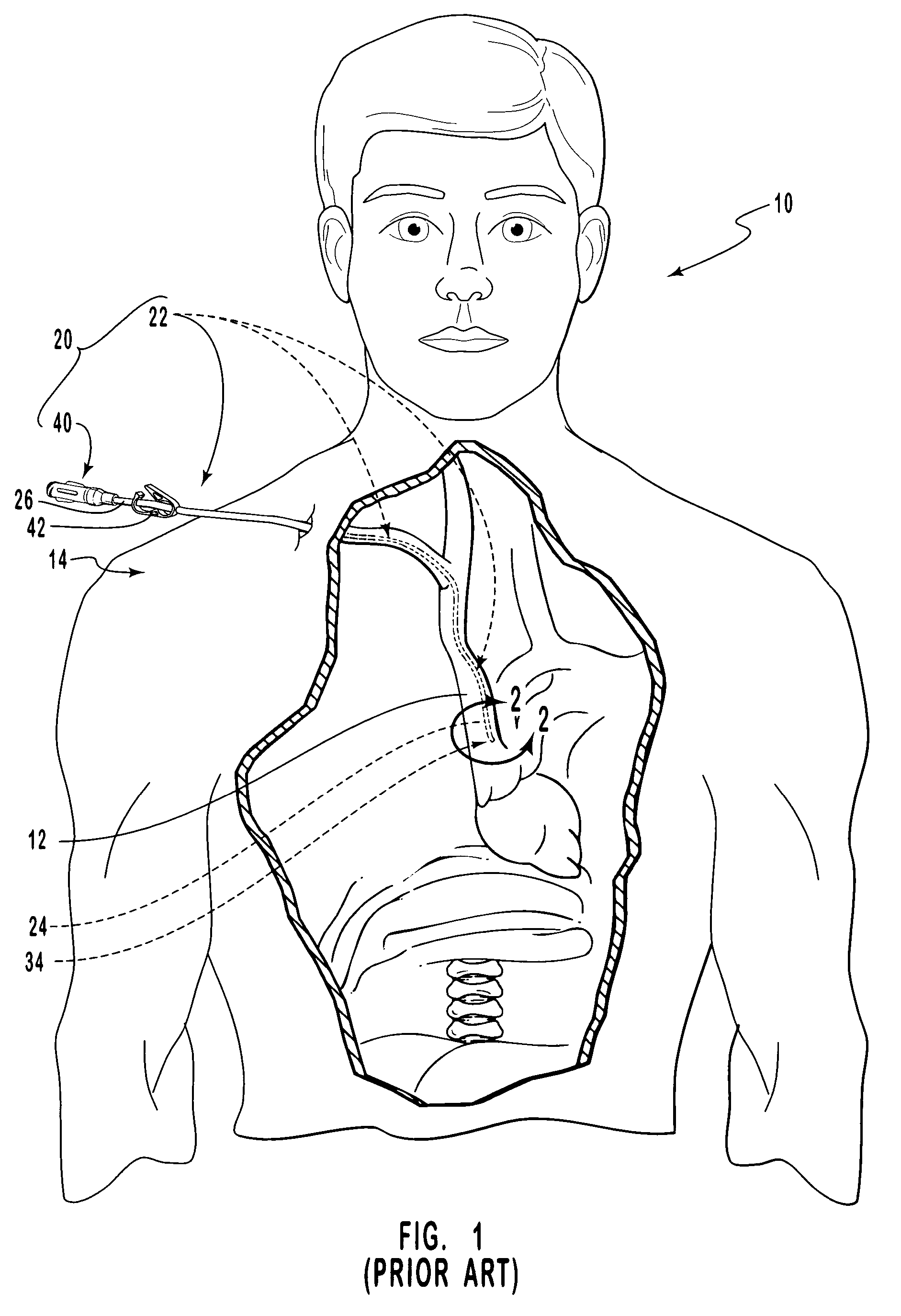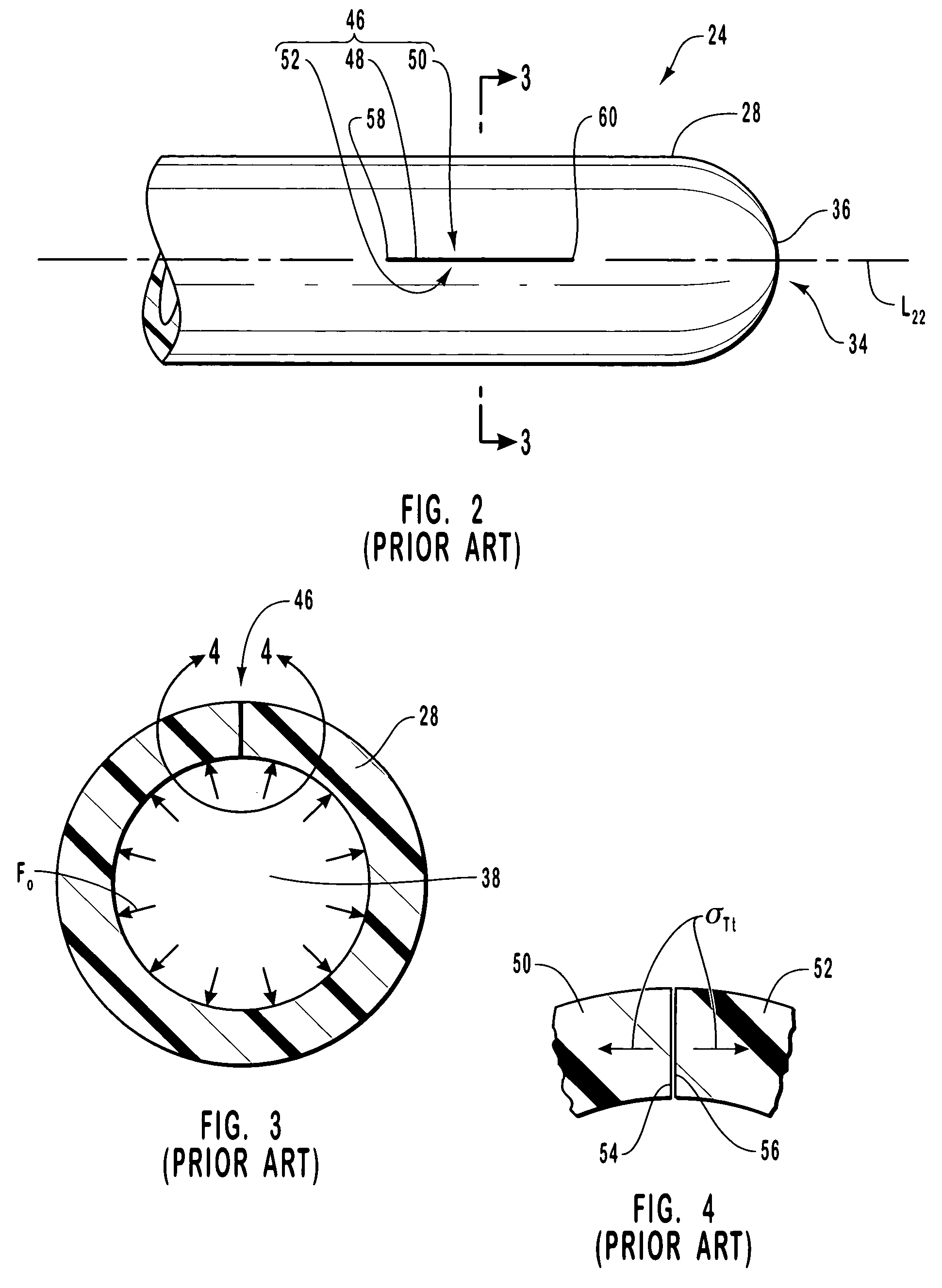Cardiovascular access catheter with slit valve
a technology of access catheter and slit valve, which is applied in the field of medical catheters, can solve the problems of unsatisfactory and dangerous continuous fluid communication, clamping can impose undesirable wear on the catheter body, and the continuous fluid communication provided by the catheter must be curtailed, so as to reduce the injury of patients and improve the durability and reliability of the performance of long-term cardiovascular access catheters
- Summary
- Abstract
- Description
- Claims
- Application Information
AI Technical Summary
Benefits of technology
Problems solved by technology
Method used
Image
Examples
first embodiment
[0108]FIG. 10 is an enlarged plan view of distal portion 84 of catheter body 82 shown in FIG. 9 showing a slit valve incorporating teachings of the present invention. Catheter body 82 is seen to have a longitudinal axis L82 and to terminate in a closed distal tip 94. Distal portion 84 of catheter body 82 includes a cylindrical circumferential outer wall 88 and a semispherical terminal endwall 96 that is continuous with outer wall 88. A slit valve 110 is formed through outer wall 88 in distal portion 84 of catheter body 82.
[0109]Slit valve 110 includes a planar slit 112 that is disposed in a slit orientation plane P1 shown on edge in FIG. 10. Planar slit 112 extends longitudinally through outer wall 88 at an acute axial deviation angle A1 relative to longitudinal axis L82 of catheter body 82. Broadly, acute axial deviation angle A1 can be in a range from about 10° to about 80°. More narrowly, acute axial deviation angle A1 can be in a range from about 20° to about 70°. Most narrowly,...
second embodiment
[0133]FIG. 15 is a cross-sectional view of distal portion 84 of catheter device 80 of FIG. 10 taken along section line 11-11 shown therein illustrating a slit valve 140 that incorporates teachings of the present invention. Slit valve 140 includes a planar slit having a slit length L2 that is measured in the plane of slit valve 140 along outer surface 92 of catheter body 82 between outer proximal endpoint 124a and outer distal endpoint 130a, which are disposed on outer surface 92 of catheter body 82. Slit length L2 is shorter than slit length L1 shown in FIG. 11 and approaches the magnitude of thickness T1 of outer wall 88.
third embodiment
[0134]FIG. 16 is a cross-sectional view like that of FIG. 15 illustrating a slit valve 141 that incorporates teachings of the present invention. Slit valve 141 includes a planar slit having a slit length L3 that is measured in the plane of slit valve 141 along outer surface 92 of catheter body 82 between outer proximal endpoint 124b and outer distal endpoint 130b, which are disposed on outer surface 92 of catheter body 82. Slit length L3 is approximately ten times thickness T1 of outer wall 88.
[0135]Planar slit 112 of slit valve 110 shown in FIG. 12, the planar slit of slit valve 140 shown in FIG. 15, and the planar slit of slit valve 141 shown in FIG. 16 are disposed in slit orientation plane P1 about longitudinal positioning point I1 such that the slits are symmetric about unique diameter D1. For example, the section of slit length L3 shown in FIG. 16 extending between outer proximal endpoint 124b and the intersection of unique diameter D1 with outer surface 92 of catheter body 82...
PUM
 Login to View More
Login to View More Abstract
Description
Claims
Application Information
 Login to View More
Login to View More - R&D
- Intellectual Property
- Life Sciences
- Materials
- Tech Scout
- Unparalleled Data Quality
- Higher Quality Content
- 60% Fewer Hallucinations
Browse by: Latest US Patents, China's latest patents, Technical Efficacy Thesaurus, Application Domain, Technology Topic, Popular Technical Reports.
© 2025 PatSnap. All rights reserved.Legal|Privacy policy|Modern Slavery Act Transparency Statement|Sitemap|About US| Contact US: help@patsnap.com



